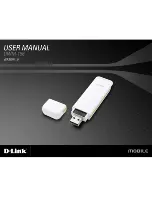
ip route 192.168.180.22 255.255.255.255 Serial1
dialer−list 1 protocol ip permit
Note: For the TA to bring up both channels, you have to store the second number in the ADTRAN, or
use [phonenumber1]&[phonenumber2] in the Cisco dialer map statement (recommended). The serial
interface is just one point−to−point interface, so having multiple dialer maps does not affect multilink
connections .
The ADTRAN dials the first number, negotiates and authenticates, and then immediately dials the
second. Notice that the command ppp multilink is not configured on the router, since the TA handles
multilink
Note: If you wish to use the serial interface in async mode, use the command physical−layer async
under the serial interface configuration. However, some serial interface hardware do not support
async communication. To connect a modem to this interface, refer to Configuring Dialout using a
Modem on the AUX Port. This document uses the AUX port. However, the configurations are very
similar.
Initiate a ping to the remote router. The router sends the dialer strings to the TA, which then initiates
the ISDN link. Once the ISDN link is up, the routers negotiate PPP and and authentication occurs.
You should be able to pass traffic at this time.
4.
Verify
There is currently no verification procedure available for this configuration.
Troubleshoot
This section provides information you can use to troubleshoot your configuration.
Troubleshooting Commands
Certain show commands are supported by the Output Interpreter Tool (registered customers only) , which
allows you to view an analysis of show command output.
Note: Before issuing debug commands, please see Important Information on Debug Commands.
debug dialer − To display debugging information about the packets received on a dialer capable
interface. When Dial−on−Demand Routing (DDR) is enabled on the interface, information
concerning the cause of any call (called the dialing cause) is also displayed. For more information, see
the debug dialer information in the Debug Commands documentation.
•
debug interface serial − Use the debug serial interface EXEC command to display information on a
serial connection failure. For more information, see the debug interface serial information in the
Debug Commands documentation.
•
debug ppp negotiation − Displays information on PPP traffic and exchanges while negotiating the
PPP components including Link Control Protocol (LCP), Authentication, and Network Control
Protocol (NCP). A successful PPP negotiation will first open the LCP state, then authenticate, and
finally negotiate NCP. For more information on reading debug ppp negotiation output please refer to
the document Understanding debug ppp negotiation Output.
•
debug ppp authentication − Displays the PPP authentication protocol messages, including
Challenge Authentication Protocol (CHAP) packet exchanges and Password Authentication Protocol
(PAP) exchanges. Refer to the following document for more information: Troubleshooting PPP
(CHAP or PAP) Authentication.
•



























